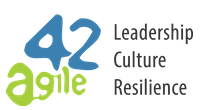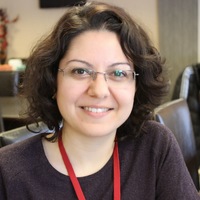Agile in Everywhere: Memories of a beginner-level Scrum servant
“…but I still haven’t found what I’m looking for…”
Having worked in NGOs and development agencies for years, in my professional and academic work, I had always searched for a model, or an approach, which would help me organize myself. The classical to do tasks, project schedules and Gantt charts which I used with the belief that “this time it will make me a very organized and a very efficient person”, soon proved to be of limited use. I lost my enthusiasm and self-motivation each time I delayed, canceled a task or extended the project duration.
I always wanted a framework which would help me define my objectives clearly, list and prioritize my tasks, estimate the time I needed to finalize them, and which I could follow up easily day by day. This tool was shared with colleagues so that we could collaborate better. Besides, I wanted to feel in control. I mean, in the classical way of planning things, I felt the responsibility to remove any obstacles all by myself as if I could control everything which impacted my work. In real life, it is not the case. I did not know that well and could not do as planned.
Sometimes all we need is a fresh start
When I started as the MEAL (Monitoring, Evaluation, Accountability and Learning) Manager in Support to Life, it was the first time I needed to support that many team members. Our team consisted of a manager (which was me), a team leader and five officers, and each of us was based in a different location somewhere in Turkey. I found myself in the middle of a very unfamiliar way of working, with my team physically away from me, collecting, analyzing the data of our projects and reporting continuously. We were mostly on email and rarely on Skype, and I was trying to comprehend what they were doing and how they were doing so that I could support them better, so that they could become highly productive and happy.
A flash of inspiration came to me. I had heard about Scrum and I already had started using Kanban by myself in my previous position. Since I was an industrial engineer, I already knew about the Toyota production system, lean management, Kanban and continuous improvement. Now my team consisted of the ideal number of team members for Scrum. As part of my small talks with my friends and my colleagues, I starting telling them about Scrum and asking if they knew it and if they used it. I discovered that my best friend who was a high-level manager of a company had been using Scrum for years with her teams. It was an essential part of her daily work routine. Our Information Management Advisor also mentioned that he used Scrum in his past workplaces, and told me how much they gained as a team.
Unfortunately, the cost of a certified ScrumMaster training was quite high. As an organization, we were short of funds at that time, and there was no previously allocated budget for such a training. There were two options: (1) I could ask my best friend to teach us how to Scrum or ( 2) I could ask the leading training company in Turkey, to give me a scholarship so that I could attend their Scrum Master training program.
I knew there was some value in the Scrum Master and Product Owner trainings, because those trainings were the product of a specific expertise. I believed in expertise. I wanted us to do Scrum “according to the book”. So I was closer to the second option.
Scrumish days
After getting to know each other better and coming together physically once, I mentioned Scrum to the MEAL Team members, without giving much detail. We started holding Daily Scrum morning meetings on Skype, in which we would ask the three questions about
- yesterday,
- today,
- impediments.
The time we spent was from 40 minutes to 70 minutes!
Then, I asked if anyone could help me understand this “Scrum” better by reading the official guides and watching some videos with me. Ayşe Nur, who previously worked as a project manager in STL, was eager to find efficient ways of managing our work and promoting collaboration within the Team. She volunteered willingly. In our second face to face meeting in Diyarbakır, Ayşe Nur and I shared our quite superficial knowledge and the videos we watched about Scrum, with other members of our Team. We asked ourselves if it was worth investing time and effort to learn and use Scrum. The terminology was quite confusing: user stories, sprints, backlogs, story sizing… We were not even sure how to define our “product”.
A very common warning in all Scrum resources was that Scrum training should be given to team members and meetings should be facilitated by a trained professional. If you learn it wrong, you do it wrong, and that is worse than not using Scrum. The MEAL Team had past experiences and lessons learned about new technological tools. At the end of the day, we decided to be quite sure-footed about it.
We decided to go on holding Daily Scrum morning meetings on Skype, and the Team charged me with researching and finding an Agile – Scrum training company or an individual Scrum Master, who would be interested in voluntarily teaching us Scrum.
agile42 & Support to Life Synergy
As soon as I got back to Istanbul, I made my research and found agile42. I read about their work and their approach. Why wouldn’t agile42 Turkey teach us Scrum and make Support to Life’s MEAL Team faster and more efficient? So we could increase the speed and quality of our protection efforts towards thousands of refugees, children in seasonal agriculture, and other populations in post-disaster emergencies.
I contacted Ebru Yalçınkaya from the agile42 Turkey team for support. We had a talk about what we were looking for and how we work as the MEAL Team, and how autonomous we were as a team. She confirmed that Scrum was appropriate for us and explained how they would support us to overcome the difficulties we were facing. I was so happy. After the talk two agile42 coaches Ayşe Turunç and Figen Yalçınkaya would work with us during our journey. We knew Ayşe and Figen normally had a hectic schedule of trainings and we were grateful. We arranged a 2-day training at STL headquarters during the last week of March 2018.
“mura, muri, muda”
The MEAL Team was gathering face to face for the third time. Other colleagues from other teams also joined us for the first day of the training. It was an interactive training with lots of discussions, games, coloured drawings, questions, team work, and laughter. I still remember very clearly the exercise in which we failed to plan in an agile way. We realized how difficult it was to separate ourselves from the traditional project management thinking, and to adopt the agile way of thinking – mura, muri, muda :) The second day was only for the MEAL Team. During that second day, our training was not only about being Agile. Figen and Ayşe reflected the spirit of the Team. We became aware of what we saw in ourselves and what we saw in each other; we discovered why we liked to work together; and we discussed about what could make us faster and better.
Ayşe and Figen did not leave us alone in our Scrum journey and closely coached us in the sprint review and retrospective meetings. We learned so much during the coaching. We are learning still.
Now our morning Daily Scrum are a maximum of 20 minutes (please forgive us Ken Schwaber and Jeff Sutherland). We gave ourselves a 5 minutes bonus for Skype-related technical reasons such as sound distortion, which steals from our time. We have the sprint planning meeting on Mondays, sprint review and sprint retrospective meetings on Fridays. Each meeting takes around 1 hour. Starting from the last week of May, the duration of our sprint will be two weeks. We will see if it works better. We are experimenting and we are learning from the experience.
What is different now with Scrum?
The first and most dominant feeling of all team members is the feeling of being more planned and organized. I know this is not the very first aim of Scrum, but as a start, I think it was something we needed. We are more transparent to each other and we try to increase collaboration even more. And for your information: getting grisp to Scrum takes time. We did not become super agile either in one day or in two months. Honestly, every day we are slightly more agile than the day before.
As a manager, Scrum provides me with speed in sharing information, and opportunity to make collaborative decisions as a team. Thus we have the collective responsibility and ownership of what we produce. In this process, I am what I want to be, a humble and servant leader. And my work is much less boring than any work usually is. We rarely have long meetings, but we are able to make use of each other’s experience and innovative ideas.
What I like most about Scrum
What I like most about Scrum is that it supports a team to be a better team, because Scrum makes everyone equal. Scrum makes a silent team member talk more and a long talker… a fast presenter. Scrum encourages us to be innovative and collaborative rather than dull and lonely. Scrum makes us think about how we can clear our way from impediments and get faster and more efficient. Each member becomes a strategic planner and plays a role in our individual and collective professional development. Most of all, I love seeing everyone in the morning and experiencing the Monday syndrome and the Friday joy altogether.
Thank you Ebru, Figen and Ayşe, Thank you agile42, for being a supporter of Support to Life and for being an inalienable part of our neurons forever :)
Thank you Ahmad, Ayşe Nur, Büşra, Miran and Mustafa, for everything we are and we will become

